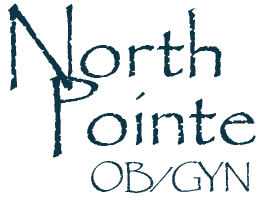Understanding Low Testosterone in Women: When Testing Becomes Essential for Your Health

Most women associate testosterone with men’s health, but this vital hormone plays a crucial role in female wellness throughout every stage of life. When testosterone levels drop below optimal ranges, women in Cumming and surrounding Georgia communities often experience symptoms that significantly impact their quality of life, energy levels, and overall health.
Low testosterone affects millions of women, yet it remains one of the most underdiagnosed hormonal imbalances in women’s healthcare. Understanding what low testosterone means, recognizing its symptoms, and knowing when to seek testing can be transformative for women struggling with unexplained fatigue, mood changes, or diminished vitality.
Unlike the dramatic hormonal shifts associated with menopause, testosterone decline often occurs gradually, making symptoms easy to dismiss or attribute to stress, aging, or other life factors. However, addressing low testosterone can restore energy, improve mood, enhance intimate relationships, and significantly boost overall well-being.
The Role of Testosterone in Women’s Health
Testosterone production in women occurs primarily in the ovaries and adrenal glands, with smaller amounts produced in peripheral tissues. While women produce significantly less testosterone than men, this hormone remains essential for multiple bodily functions and overall health maintenance.
In healthy women, testosterone supports muscle mass development and maintenance, bone density preservation, cognitive function, mood regulation, and sexual desire. It also plays important roles in energy production, metabolic function, and cardiovascular health. When testosterone levels decline, these interconnected systems can become compromised.
The normal range for testosterone in women varies significantly based on age, menstrual cycle phase, and individual factors. Premenopausal women typically have testosterone levels ranging from 15 to 70 nanograms per deciliter, while postmenopausal women often experience levels between 5 to 25 nanograms per deciliter.
Understanding that testosterone naturally declines with age helps distinguish between normal aging processes and clinically significant deficiency requiring medical intervention.
Common Symptoms of Low Testosterone in Women
Energy and Vitality: Persistent fatigue that doesn’t improve with adequate sleep often signals hormonal imbalance. Women with low testosterone frequently describe feeling exhausted despite maintaining healthy sleep schedules and lifestyle habits. This fatigue differs from temporary tiredness, persisting for weeks or months without clear explanation.
Mood and Mental Health: Testosterone deficiency can contribute to depression, anxiety, irritability, and mood swings. Women may notice increased emotional sensitivity, difficulty managing stress, or feelings of sadness that seem disproportionate to life circumstances. Cognitive symptoms include brain fog, difficulty concentrating, and memory problems.
Physical Changes: Decreased muscle mass, increased body fat (particularly around the midsection), and reduced bone density are common physical manifestations. Women may notice that maintaining their usual fitness level becomes more challenging, or that they gain weight despite unchanged eating and exercise habits.
Sexual Health: Reduced libido, decreased sexual satisfaction, and difficulty achieving arousal are frequently reported symptoms. These changes can strain intimate relationships and affect overall quality of life. Vaginal dryness and decreased sensitivity may also occur.
Sleep Disturbances: Testosterone deficiency can disrupt sleep patterns, leading to difficulty falling asleep, frequent awakening, or non-restorative sleep. Poor sleep quality often exacerbates other symptoms, creating a cycle of hormonal imbalance and declining wellness.
When to Consider Testosterone Testing
Persistent Unexplained Symptoms: If you experience multiple symptoms that persist despite lifestyle modifications, stress management, and adequate rest, testosterone testing may provide valuable insights. Symptoms that interfere with daily activities, work performance, or relationships warrant medical evaluation.
Age-Related Changes: Women approaching perimenopause or menopause often benefit from comprehensive hormone testing, including testosterone levels. Understanding baseline hormone levels helps healthcare providers develop personalized treatment strategies and monitor changes over time.
Medical History Factors: Certain medical conditions and treatments can affect testosterone production. Women with polycystic ovary syndrome, thyroid disorders, diabetes, or those taking certain medications may experience testosterone fluctuations requiring monitoring.
Family History: Women with family histories of hormonal imbalances, early menopause, or autoimmune conditions may benefit from proactive hormone testing to identify potential issues before symptoms become severe.
Lifestyle Impact: When symptoms significantly impact work performance, relationships, exercise capacity, or overall life satisfaction, testing becomes essential for developing effective treatment strategies.
The Testing Process and What to Expect
Testosterone testing typically involves a simple blood draw performed in the morning when hormone levels are naturally highest. Your healthcare provider may recommend testing on specific days of your menstrual cycle if you’re still menstruating, as testosterone levels fluctuate throughout the monthly cycle.
Comprehensive hormone evaluation often includes testing for free testosterone, total testosterone, and sex hormone-binding globulin. Additional tests may assess related hormones like estrogen, progesterone, thyroid hormones, and cortisol to provide a complete picture of your hormonal status.
Preparation for testing may include avoiding certain medications, supplements, or activities that could affect results. Your healthcare provider will provide specific instructions based on your individual circumstances and current medications.
Results interpretation requires expertise in women’s hormone patterns and age-specific ranges. What’s considered normal varies significantly between laboratories and individual women, making professional interpretation essential for accurate diagnosis and treatment planning.
Understanding Your Test Results
Normal Ranges: Testosterone levels within normal ranges don’t automatically rule out hormone-related symptoms. Some women feel optimal at higher ends of normal ranges, while others may experience symptoms even with technically normal levels.
Free vs. Total Testosterone: Free testosterone represents the hormone available for your body to use, while total testosterone includes hormone bound to proteins. Free testosterone often provides more clinically relevant information for symptom assessment.
Age Considerations: Expected testosterone levels change with age, and what’s normal for a 25-year-old differs significantly from normal ranges for a 50-year-old. Your healthcare provider considers age-appropriate expectations when interpreting results.
Symptom Correlation: The most important factor is how your testosterone levels correlate with your symptoms and overall health picture. Treatment decisions should consider both laboratory values and clinical presentation.
Treatment Options for Low Testosterone
Lifestyle Modifications: Strength training, adequate sleep, stress management, and nutrition optimization can naturally support healthy testosterone levels. These interventions often serve as first-line approaches or complement medical treatments.
Hormone Replacement Therapy: Various testosterone replacement options exist for women, including gels, patches, pellets, and injections. Treatment selection depends on individual preferences, lifestyle factors, and medical history.
Alternative Approaches: Some women benefit from supplements, herbal remedies, or bioidentical hormone therapy. These options require careful monitoring and professional guidance to ensure safety and effectiveness.
Monitoring and Adjustment: Successful testosterone treatment requires ongoing monitoring of hormone levels, symptom improvement, and potential side effects. Regular follow-up appointments ensure optimal dosing and treatment effectiveness.
Safety Considerations and Monitoring
Testosterone therapy in women requires careful medical supervision due to potential side effects and individual response variations. Common side effects may include acne, hair growth changes, voice deepening, or mood fluctuations. Most side effects are dose-dependent and reversible with proper management.
Regular monitoring includes hormone level testing, symptom assessment, and screening for potential complications. Your healthcare provider will establish an appropriate monitoring schedule based on your treatment approach and individual risk factors.
Contraindications to testosterone therapy include certain types of breast cancer, liver disease, and pregnancy. Complete medical evaluation helps identify women who might not be suitable candidates for hormone replacement.
Frequently Asked Questions About Low Testosterone in Women
• Is low testosterone common in women? Yes, testosterone deficiency affects millions of women, particularly those over 40 or experiencing menopause. However, it remains underdiagnosed due to limited awareness and symptom overlap with other conditions.
• Can birth control affect testosterone levels? Some hormonal contraceptives can lower testosterone levels by increasing sex hormone-binding globulin. Women experiencing symptoms while using hormonal birth control should discuss testing with their healthcare provider.
• How long does it take to see improvement with treatment? Most women notice initial improvements within 3-6 weeks of starting testosterone therapy, with optimal benefits typically achieved after 3-6 months of consistent treatment.
• Are there natural ways to boost testosterone? Lifestyle modifications including strength training, adequate sleep, stress management, and proper nutrition can support healthy testosterone production, though severe deficiency typically requires medical treatment.
• Is testosterone therapy safe for women? When properly prescribed and monitored by experienced healthcare providers, testosterone therapy is generally safe for most women. Regular monitoring helps ensure optimal benefits while minimizing potential risks.
Don’t let unexplained fatigue, mood changes, or declining vitality diminish your quality of life. The experienced team at North Pointe OB/GYN in Cumming understands the complex role of hormones in women’s health and offers comprehensive testing and treatment options to help you feel your best at every stage of life.


